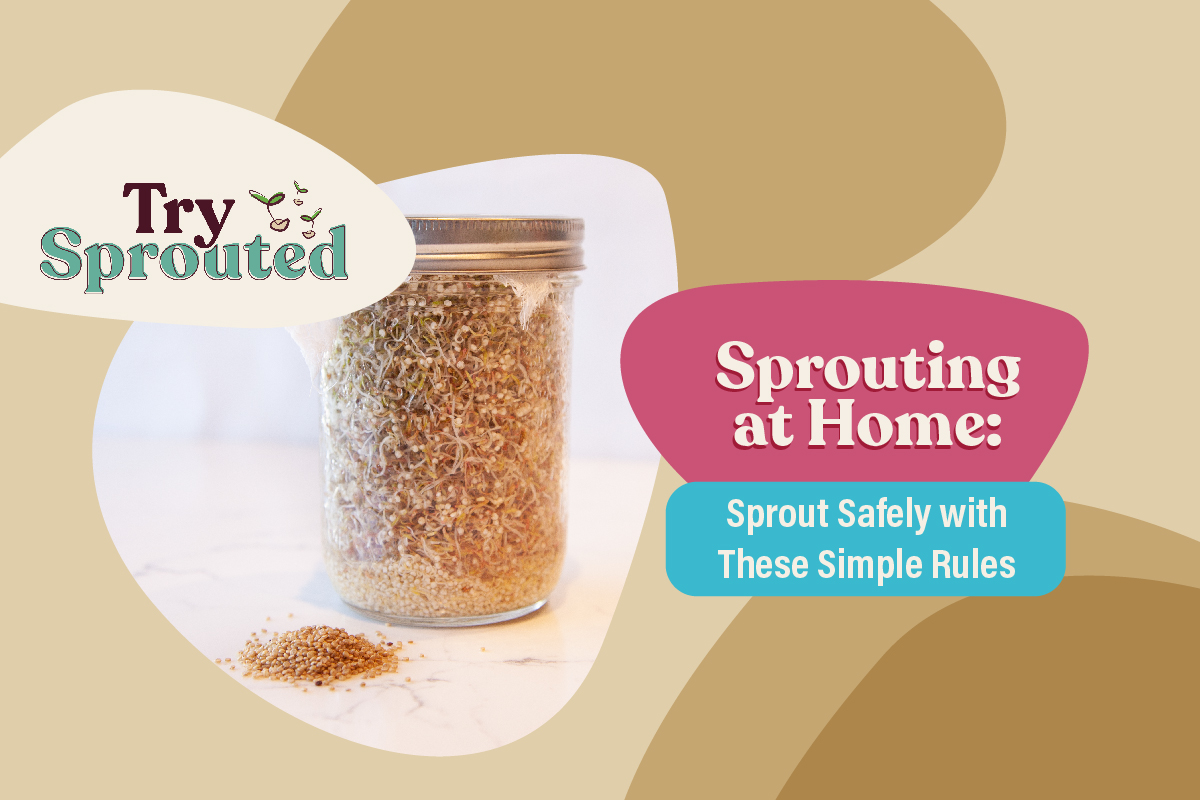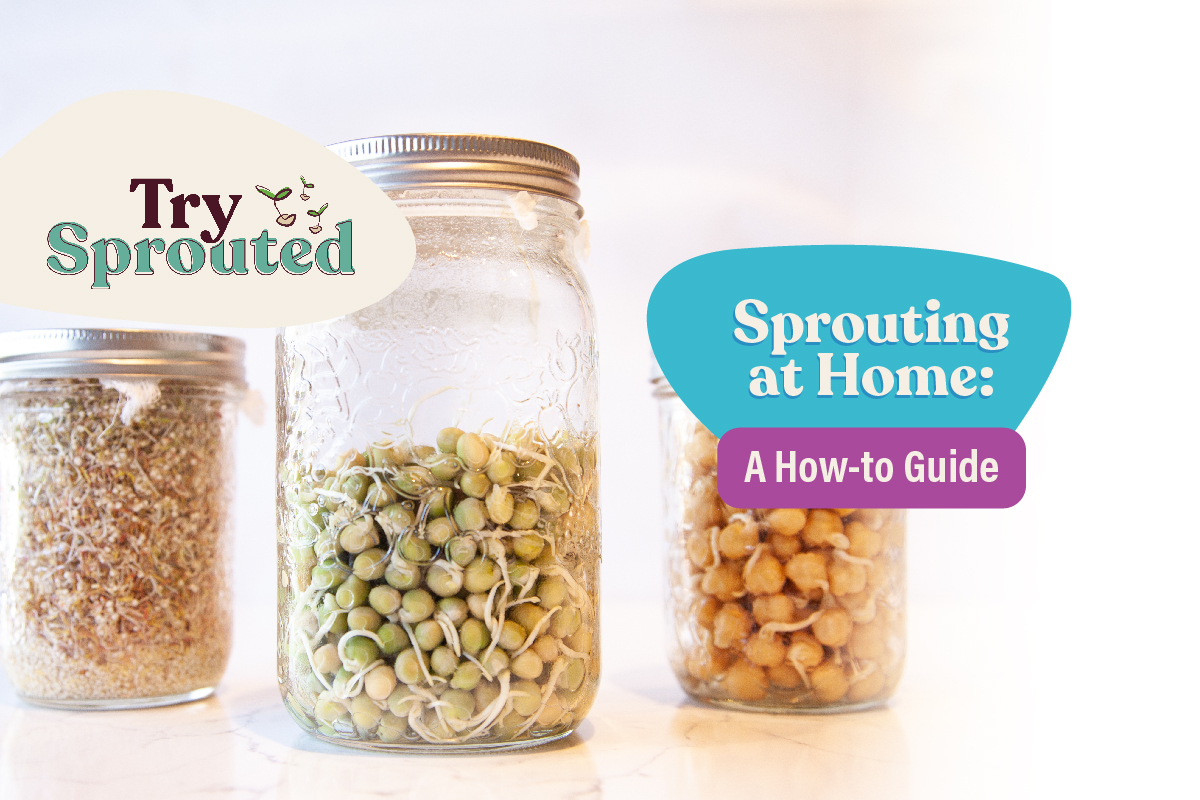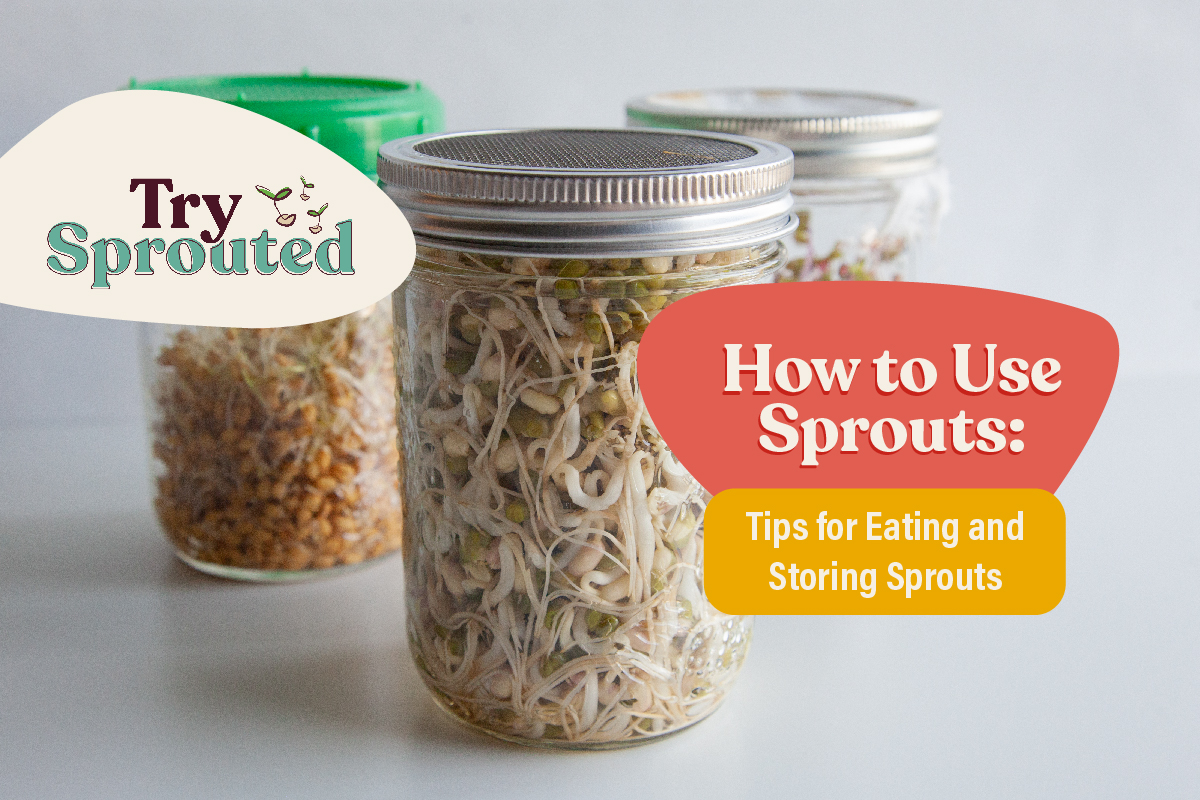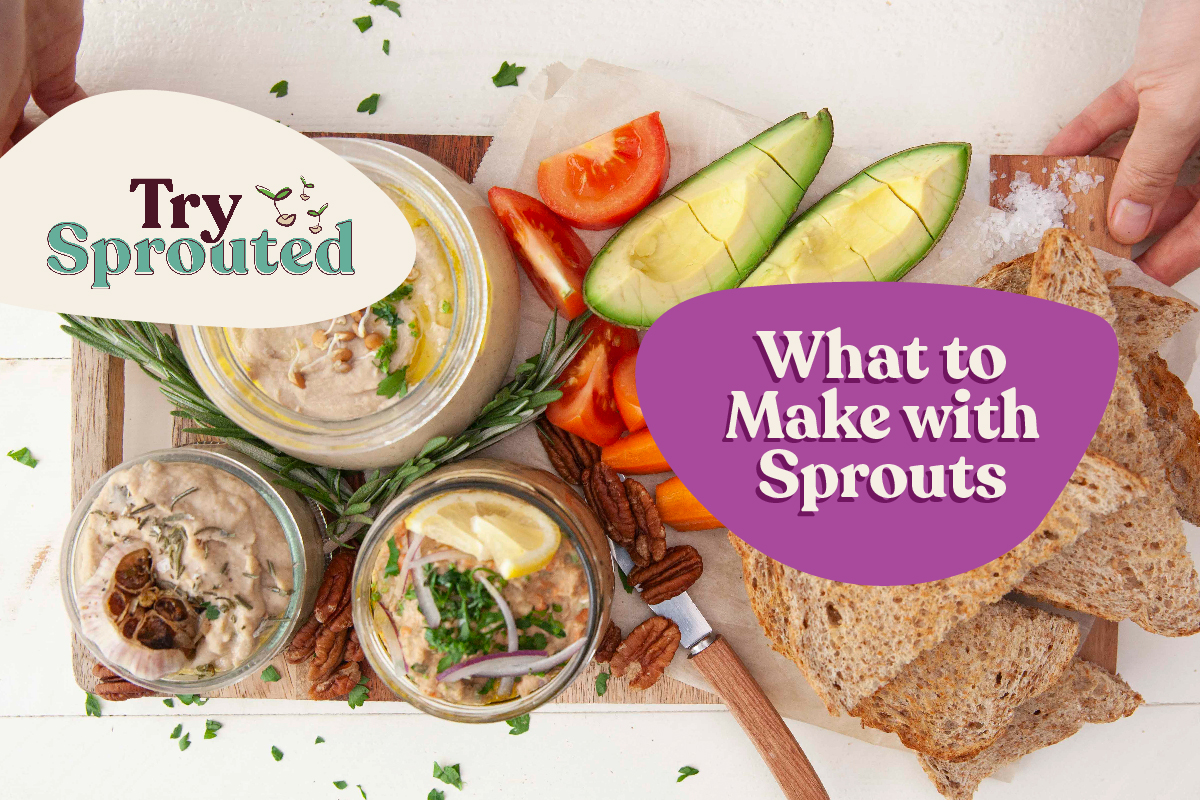Try Sprouted!
Article Sprouting at Home: Sprout Safely with These Simple Rules

Safety First! Simple Rules for Sprouting at Home Safely
The nutrition-enhancing and flavour-improving benefits of sprouting aren’t limited to the whole grains in your bread. They also apply to sprouts you can serve on your sandwiches and salads, too!
If baking your own sprouted whole grain bread at home is beyond your culinary comfort zone, try a friendlier sprouting DIY. Growing your own fresh sprouts at home is easier than the classic bean-in-a-cup STEM experiment—and far tastier!
Every type of seed and grain sprouts on its own schedule. But that doesn’t mean sprouting at home is complicated. All you need are a few simple tools, a few basic rules, and our handy Sprouting at Home How-to Guide to the most common, easy-to-find—and deliciously simple—seeds and grains to sprout at home.
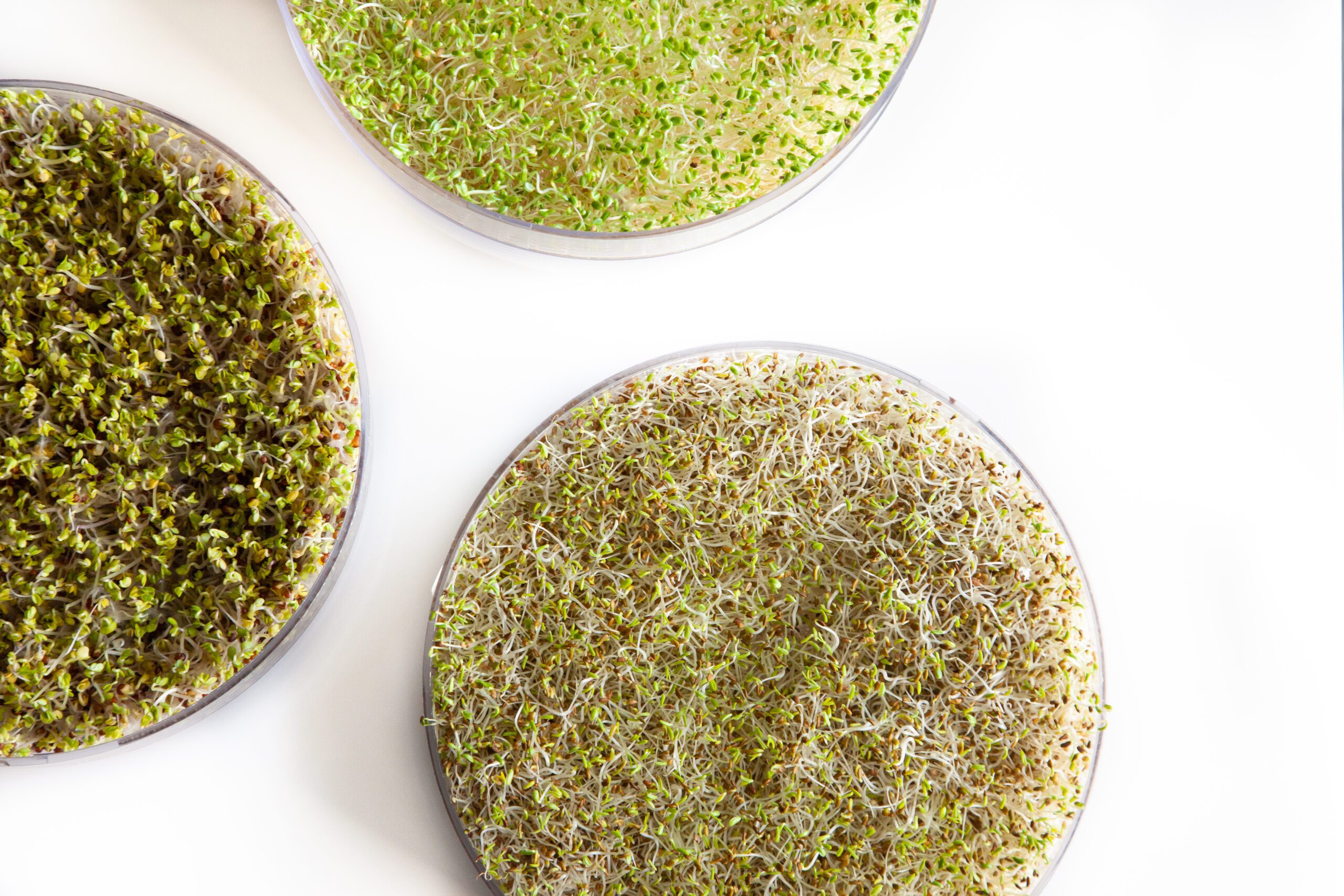
Sprouting and Food Safety
Sprouts are a delicious addition to a healthy diet and sprouting at home is an easy way to add freshness and variety to meals all year round.
And fresh sprouts can have some risk of foodborne illness.
If you have a weakened immune system, are immunocompromised, elderly, a young child, or you are pregnant, it’s best to avoid eating fresh sprouts.
Why? Because the same warm, humid growing conditions sprouts need are also ideal for bacteria like E. coli, Salmonella, and Listeria.
To reduce food safety risk, you can do two things:
*While much of the food safety risk can be reduced through safe food handling, some of the risk comes on the seeds themselves.1 Look for a sprouting seed supplier who has their seeds tested for pathogens (like Mumm’s Sprouting Seeds).
7 Basic Rules for Sprouting at Home Safely

Wash your tools. And hands.
Whether you’re using a simple jar with cheesecloth, or a stacking set for serious sprouting, make sure every tool you use for soaking and sprouting is squeaky clean. Including your hands.

Use clean water.
Only use water you feel safe and happy drinking to soak and rinse your sprouts. If your tap water is so hard or heavily chlorinated that you’d filter it, or your water must be boiled before it’s safe to drink, treat your water first.

Rinse well.
Before you soak them, rinse your seeds well. After soaking, rinse and drain your sprouts well every 12 hours (at least twice a day). In summer—or if you live somewhere hot—rinse every 6 hours. Use cool water (not ice cold, and no hotter than lukewarm).

Drain completely.
After every rinse, drain your sprouts completely. You don’t want the ones at the bottom sitting in a puddle. Your sprouts need to be clean and moist—not soaking wet—to sprout safely.

Use your senses.
If your sprouts smell at all musty, appear mouldy,** feel slimy or anything less than fresh and firm, toss them!

Enjoy fresh, store cold.
Sprouts are best at their freshest—use them as soon as they’re ready if you can! Store them in the fridge following the tips in the How to Store Sprouts section of our Sprouting at Home How-to Guide.

Make only what you can use.
Only sprout as much as you can use up within the storage time. To avoid wasted sprouts, use the seed-to-sprout volume chart in our Sprouting at Home How-to Guide some of the smallest seeds make a surprisingly large amount of sprouts!).
**
Brassicas—including broccoli and radishes—are one of a few seeds that sprout fine, hair-like roots that can look like mould.
Unless your seed makes a specific note about hairy root structures, treat all other furry sprouts with suspicion!
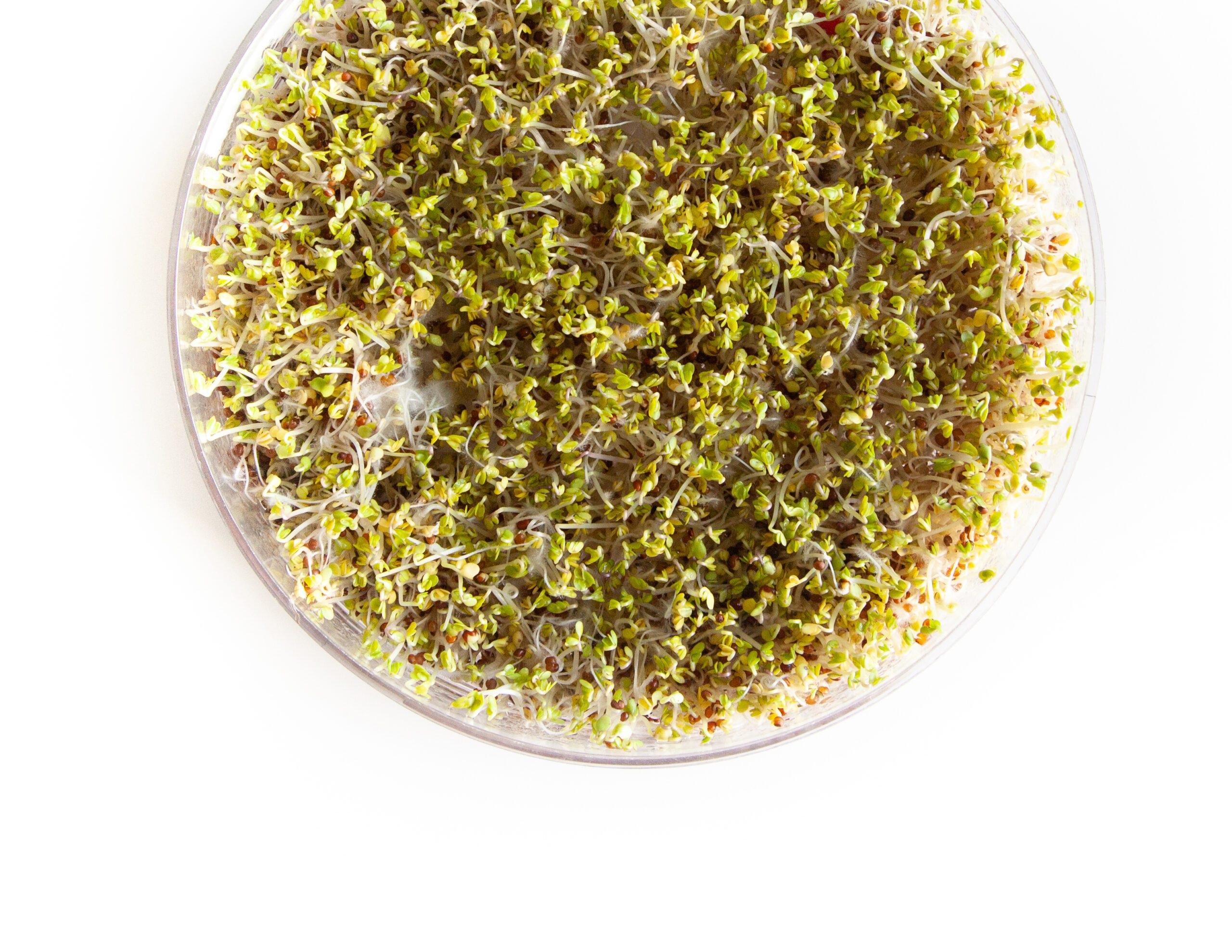
Up Next in Try Sprouted!
Now that you know the basic rules, get sprouting at home safely! Learn what grains, seeds, and beans make beginner-friendly sprouts, how long to soak them, how long they take to sprout, and how many sprouts they make in our Sprouting at Home How-to Guide!
Invite more sprouted inspiration like this into your inbox—scroll down to subscribe now, or learn why you should sign up for Silver Hills Bakery emails!
Silver Hills Bakery’s Sprouted Education Series:
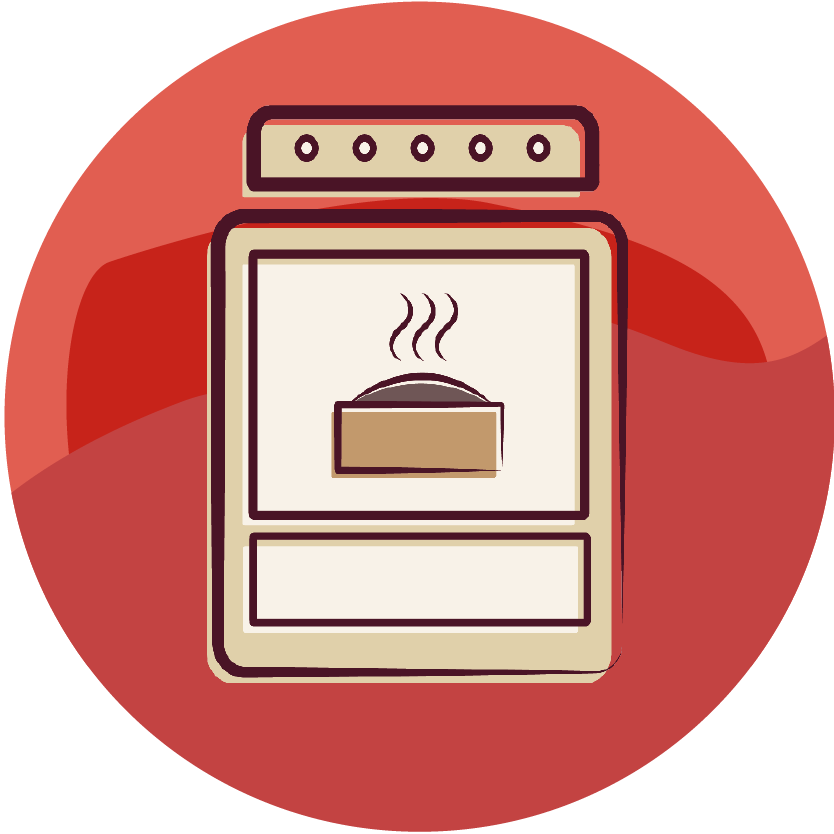
What?
Part 1: The WHAT of Sprouted Whole Grains

Why?
Part 2: The WHY of Sprouted Whole Grains

Try!
Part 3: Now TRY Sprouted Whole Grains
